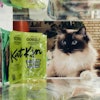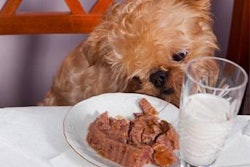In 2010, the Chinese pet products market reached 40 billion yuan (US$6.4 billion) in sales, according to Jia Tong, vice president of Goumin.com, which bills itself as the largest social network for pet owners in China. She was one of the featured speakers during Petfood Forum China on October 12 in Shanghai, which drew more than 170 petfood professionals from China as well as Japan, Thailand, the US and Europe.
Jia did not specify how much of those sales were allotted to petfood, and that seems to be a difficult number to pin down. Global research firms such as Euromonitor put Chinese petfood sales at only US$305 million in 2009 and in 2011 projected sales to reach just $476 million by the year 2015, which seems very low compared with that US$6.4 billion figure for the entire Chinese pet market. Further, Paula Flores, global head of pet care research for Euromonitor, said during the International Pet Industry Summit (IPIS, held October 11 as part of Pet Fair Asia, Petfood Forum China's show partner) that petfood sales in China are growing but are not as high yet as sales of other pet products -- a definitive difference from other markets around the world.
Considering Goumin.com is based in country and has more than 800,000 users in China, it might have a better handle on sales there. Jia cited these impressive statistics:
- The domestic pet products market hit 13 billion yuan (US$2.1 billion) in sales in 2010, more than 25% of the total Chinese pet market;
- Production of petfood in China increased 800% from 2000 to 2010; and
- 25% of sales of petfood on Goumin.com are for domestic brands (the site offers about 2,000 kinds of petfood).
Multinational brands still dominate the market in China; Jia presented data from e-commerce site Taobao.com showing Royal Canin with the largest weekly sales of dog food by far (more than five times higher than the next best seller, a local brand) and Pedigree leading the pack for dog snacks (doubling the sales of Wanpy, a Chinese brand coming in at second).
I was able to see for myself that multinational brand dominance while touring several pet shops in Shanghai. Petzoo is a pet superstore there, though instead of being a big box, it has several stories, including one devoted to a pet hospital. The main retail floor featured multiple shelves devoted to petfoods, with Royal Canin having the most SKUs by far; but Pedigree, Whiskas, Merrick Pet Care, Natural Balance, Hartz, Vitakraft and many other global brands had significant presence, too. The same was true at smaller pet retail establishments I visited, such as the Kenny King boutique and Naughty Family Pets, a pet hospital featuring a large retail and grooming center.
Still, judging by the number of Chinese petfood companies represented at Petfood Forum China, it's clear the domestic market is itching to take off. Bian RongXing, another speaker and department head of the Shanghai Veterinary Drug and Feed Inspection Institute, said that an April 2012 meeting organized by the government drew 60 Chinese petfood manufacturers.
And, after all, there are millions of dogs in China; the number varies from 28 million according to Flores to 100 million according to Goumin.com. Amy Liu, corporate affairs VP for Mars Petcare China (and another speaker at IPIS), put the total number of dogs and cats in China at 68 million. What everyone does agree on is that very few of these pets, especially dogs, eat commercial petfood; for dogs, it's well below 5%. That represents a huge opportunity for domestic and multinational brands alike.
So, what's holding the market back? Jia and Liu both stressed the need for industry standards to ensure safe, high-quality petfoods -- a sentiment expressed by others during formal and informal discussions throughout both IPIS and Petfood Forum China. Bian, who is also a member of the Shanghai Feed Industry Standardization Committee, said during his presentation that a new law has been finalized but not yet released; the release date is up to the government, which is the midst of a large transition with a new president and premier taking office. Bian did give a source for more information: www.chinafeed.org.cn.
Another barrier cited by Liu was pet owner education, which she urged the entire Chinese pet industry to mobilize around to ensure the continued growth of the industry. She also acknowledged, however, that the industry there is still very young, a point emphasized by Bian. As it matures and as pet owners grow in number and knowledge, changes should continue. Jia said that among Goumin.com's 20-35-year-old, web-savvy users, purchases are trending toward higher quality, higher priced petfood, following the recommendations of fellow users. With that sort of trend, the sky's the limit.


















